What’s unfolding out of the infinite field of opportunity from Technion Israel in 2020? Subscribe to Technion LIVE e-newsletter to be the first to know, catching each brainwave into tomorrow’s world.
Yearly Archives: 2020
Technion FIRST in Dubai and AIPAC
In celebration of their winning a silver medal at last October’s Robotics Olympics in Dubai, the FIRST Israel team from Megiddo Regional High School has been invited to speak on the stage of the prestigious AIPAC Policy Conference in Washington, D.C.
 The Megiddo Team, which functions under the FIRST Israel organization led by the Technion-Israel Institute of Technology and Israel’s Education Ministry and Ministry of Science and Technology, went to Dubai last October to participate in the Global Challenge FIRST World Olympics. Following its impressive accomplishments during what was largely a secret trip, and earning a silver medal, the team members were invited to speak at AIPAC March 1-3, 2020 in Washington, D.C.
The Megiddo Team, which functions under the FIRST Israel organization led by the Technion-Israel Institute of Technology and Israel’s Education Ministry and Ministry of Science and Technology, went to Dubai last October to participate in the Global Challenge FIRST World Olympics. Following its impressive accomplishments during what was largely a secret trip, and earning a silver medal, the team members were invited to speak at AIPAC March 1-3, 2020 in Washington, D.C.
The teens who represented the organization and the State of Israel in Dubai will fly to the US on February 26 to take part in grand rehearsals before speaking on stage, presenting the robot they developed and sharing their special story.
The competition, which featured 119 delegations from 119 countries, was an important opportunity for positive exposure for the State of Israel in the technological and diplomatic aspects. The Israeli team participated in the international competition and qualified for the finals as head of the cluster of delegations competing together that included Italy, Uganda, and Australia. The Israeli team won the silver medal in the finals after completing the preliminary stage with the highest point ranking and being the only team with a perfect winning score of 9-0-0. The team also received a special award for giving exceptional help to other teams.
The eight teens are Noa Duman, Yuval Perry, and Ron Perry of Ramot Menashe; Itai Ziv of Merhavia; Omar Baram of Yokneam-Illit; Ido Levy and Gal Chapman of Ramat Hashofet; and Uzi Ben Yitzhak of Kibbutz Megiddo. Two mentors – Osnat Duman and Nissim Levy – and security staff accompanied the students to ensure their safety in Dubai. The team made the trip thanks to the assistance of the Megiddo Regional Council, the Mellanox Company, the Tama Group, and additional companies, as well as support from the Ministry for Foreign Affairs.
The delegations in Dubai came from all over the world and competed, using robots they alone developed, with a challenge simulating collection of garbage from oceans and protecting the environment. Points were given based on their ability to collect as many items as possible from the arena where the competition was held.
FIRST is an acronym for Inspiration and Recognition of Science and Technology. The U.S.-based, not-for-profit organization was established in 1989 by inventor and entrepreneur Dean Kamen to inspire the love of science and technology in children and youth. It uses a model of sporting robotics competitions where teams compete against each other in a challenge.
More than 570,000 children and teens participate in FIRST programs around the world. Sponsored by the Technion, FIRST Israel has been operating as a non-profit organization since 2005. It is headed by Major-General (res.) Avihu Ben-Nun. In Israel, 14,000 children and youth from kindergarten to 12th grade from all over the country and from all sectors participate in this activity.
“The achievements of the high school delegation from Megiddo to Dubai were a source of pride and respect for Israel FIRST and the entire State of Israel,” said Major-General (res.) Avihu Ben-Nun. “I am thrilled that our friends at AIPAC recognize the importance of the event, and we thank them for inviting them to the conference and supporting the team’s technological success. We also thank our partners at the Technion, the Education Ministry, the Science and Technology Ministry and the Megiddo Regional Council who have been of great assistance so that the pupils could participate in the Robotics Olympics in Dubai.
“The team’s travel to Dubai today marks the success of the FIRST Israel community, as we mark 15 years since establishing a branch in Israel that has taken upon itself, in collaboration with the Technion, to increase the motivation of the generation of the future to engage in science and technology, alongside the values of helping others, partnership, professional courtesy and mutual responsibility. On behalf of FIRST Israel, I wish good luck to our representative on the AIPAC stage.”
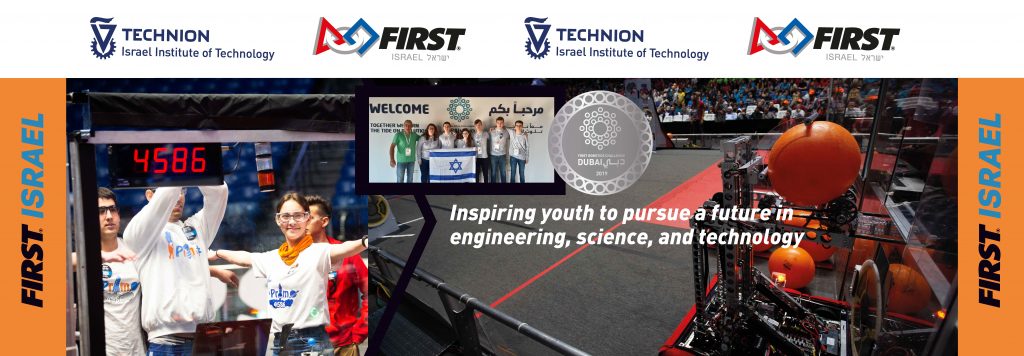
Technion President Prof. Uri Sivan said: “FIRST is an important and wonderful program that expresses the Technion’s mission of encouraging science and engineering studies among children and youth. Moreover, it expresses the spirit of change that we are working to implement in teaching methods in the Technion. The stress is shifting from frontal teaching to learning based on projects; it will give students not only knowledge but also a broader systemic vision, including leadership and teamwork skills. The Technion has been a partner in the FIRST program from its inception and will continue to support it as an important and vital national program. We view FIRST students as our future students – leaders who will ensure the continued advancement of technology and research in Israel.”
Science and Technology Ofir Akunis added: “This excellent team made an unprecedented achievement in its ranking and qualities at the Robotics Olympics in Dubai. In fact, I had no doubt that they would have tremendous achievements, and so I told them at our meeting, on the eve of their leaving for the competition. They give us real national pride and are absolute proof of the importance of the government’s decision that I led since taking office – to finance these missions from the ministry’s budget. I wish the team members a good flight to Washington and am sure that they will represent us with honor on the AIPAC stage in the American capital as well.”
Education Minister Rafi Peretz concluded: “The wonderful achievement of our national robotics team brings tremendous pride for the education system and the entire State of Israel. In addition to its educational importance, a competition was also an important opportunity for Israel from the ground-breaking technological and diplomatic aspects. In light of the competition’s importance, I worked hard to obtain the security authorizations required for our pupils to participate in the prestigious competition. We will continue to work for the development of our children’s future and creating excellence so that Israel will continue to be a leading force in the global market. I welcome and salute the winning team. Your success is our success. Congratulations to you and the supporting personnel who accompanied you.”
Researchers at the Technion have developed a standalone system that produces water from the air, even in desert regions. The innovative system is capable of providing water to small and isolated communities, without the need to transport water for long distances
According to estimates by the World Health Organization (WHO), about 13% of the world’s population will suffer from insufficient availability of drinking water by 2025. For this reason, access to fresh water is one of the 17 Sustainable Development Goals (SDGs) adopted by the United Nations in 2015. This goal was the motivation for developing a standalone system for producing water from the air.
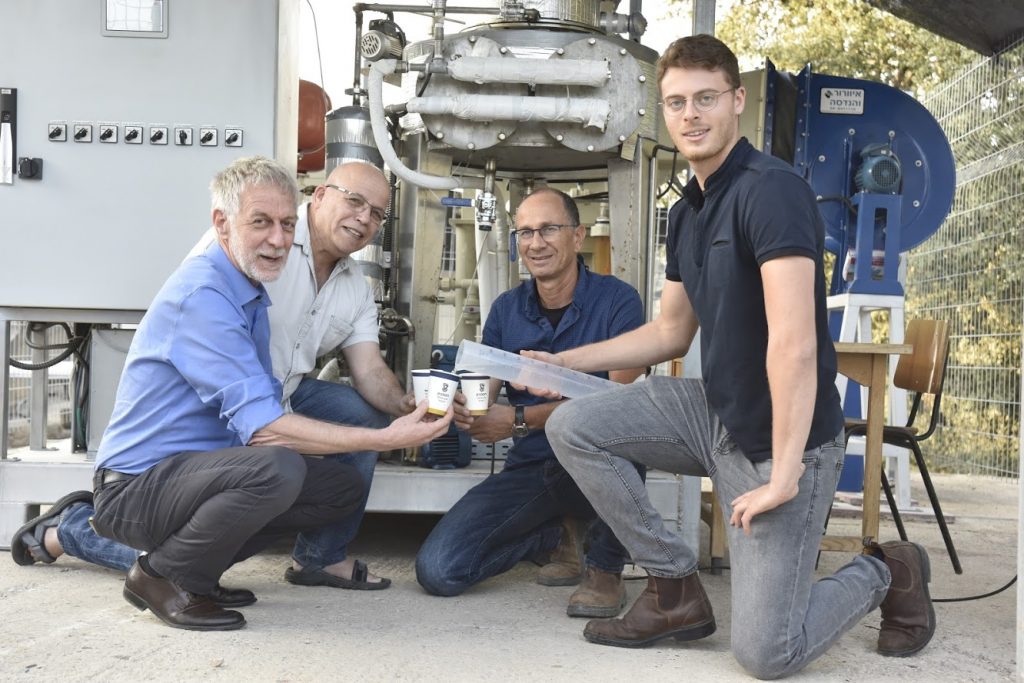
The technology was developed by Professor David Broday and Professor Eran Friedler from the Environmental, Water and Agricultural Engineering Division of the Technion Faculty of Civil and Environmental Engineering, and the Stephen and Nancy Grand Water Research Institute (GWRI). It is the first technology of its kind in the world: an energy-efficient system for producing clean water from the air. Unlike the existing technology, the Technion researchers’ system is based on a two-stage cyclic process: separation of moisture from the air by absorption using a highly concentrated saline solution, and separation of the moisture from the desiccant under and condensing the vapor under sub-atmospheric pressure conditions.
“Besides being energy efficient, the new technology offers an additional advantage: as part of the process the water undergoes also pollutant removal processes,” said Prof. Broday. “Our technology turns water into a commodity as it enables water to be produced anywhere in the world, without being dependent upon existing sources of liquid water. The prototype we have built demonstrates that the system works as expected and we currently work toward turning it into a commercial product.”
“Existing technologies work simply as “reverse” air conditioners, by cooling the whole air mass entering the system in order to condense the moisture,” said Prof. Friedler. “This ‘direct cooling’ approach is energetically inefficient, since such systems waste much of their energy requirements on cooling about 97% of the air volume, which is non-condensable. The new technology involves cooling of only the moisture that has been extracted from the air, significantly reducing the amount of energy required to produce water.”
“We are not competing with desalination,” explained Prof. Broday. “Israel is a developed nation situated near the sea and can supply all its water needs through desalination systems. Among other reasons, this is because Israel is a relatively small country and a significant portion of the population lives along the coast, such that water does not need to be transported over long distances. In contrast, transporting desalinated water to communities situated far from the coast is very expensive due to the need for extremely long pipelines. Herein lies the advantages of the new technology.” The system is particularly relevant for small and isolated communities that are located far from fresh- or salty- water sources, as it can produce water where it is most needed.
According to Prof. Friedler, “in addition to being an essential component of life, water also influences other important aspects, among them individual and community health and even the empowerment of women. In many places, young girls do not attend school because they are busy providing water for the family. Even as adults, women devote hours to transporting water. Furthermore, access to water is a central factor in bloody confrontations in arid regions nowadays and constitutes one of the foremost motives for immigration. In such conflict zones, the risk of children dying from polluted water is 20 times higher than dying due to violent acts”.
Micro-Swimmers and Soft Robotics: a Research Workshop of the Israel Science Foundation
The frontiers of tiny robotics were advanced this week in a pioneering workshop held jointly by Technion – Israel Institute of Technology and the Israel Science Foundation
Entitled: “Micro-swimmers and Soft Robotics” the event was organized by Prof. Alex Leshansky of the Faculty of Chemical Engineering, Prof. Yizhar Or and Amir Gat, both from the Faculty of Mechanical Engineering.
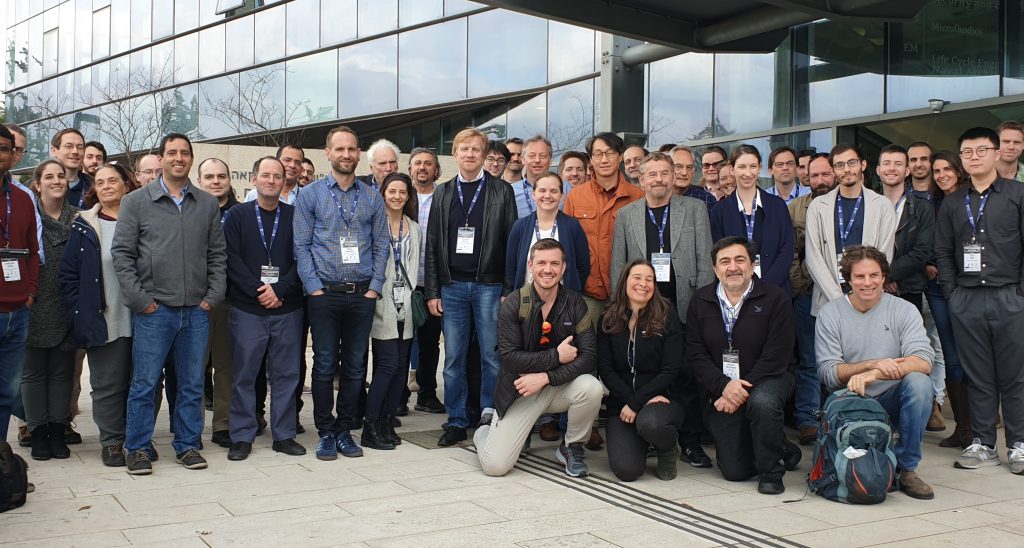
Research Workshop of the Israel Science Foundation on Micro-Swimmers and Soft Robotics
The development of micro- and nanomachines that can manoever through complex fluidic environments offers great promise for the technologies of the future. Innovations in this field are especially active within biomedical applications. These can range from catalytically driven nanowires to magnetically, light or acoustically-driven colloids. Some propellers are flexible, and exploit an ability to change shape to achieve propulsion. This capaity for continuous shape-changing is also an essential feature of Soft Robotics – an emerging bio-inspired concept of actuation with promising applications for robotic locomotion and manipulation.
Held in the first week of February 2020, the research workshop brought together world-leading international and Israeli experts involved in the design, fabrication, theory, and control of artificial micro-swimmers, as well as leading scientists in the field of Soft Robotics.
The list of invited speakers included Bradley Nelson (ETH, Zurich), who spoke about programmable magnetic micromachines; Peer Fischer (Max Planck Institute, Stuttgart) with a talk on acoustic-powered and chemical nanopropellers; Joseph Wang (UCSD) who gave a talk on in-vivo applications of micromotors; and Moshe Shoam (Technion) who spoke about the future of small-scale medical robotics. Speakers from the Soft Robotics community included Metin Sitti (Max Planck Institute, Stuttgart) who presented bio-inspired magnetic soft swimmers; Hod Lipson (Columbia University), who presented his work on soft actuators for soft robotic; and Rob Shepherd (Cornell) with a talk on adding soft materials to small-scale robots.
More details about the onference (website & program): https://www.swimmerssoro.com/
Prof. Ayelet Fishman of the Technion:
Directed Evolution as a Tool for Significant Improvement in the Production of Biological Fuel
New technology based on directed evolution of a natural enzyme is expected to accelerate and improve the efficiency of the production of waste-based fuels. The research published in the journal ChemCatChem, was led by Prof. Ayelet Fishman and her doctoral student Shalev Gihaz from the Faculty of Biotechnology and Food Engineering at the Technion-Israel Institute of Technology in Haifa.
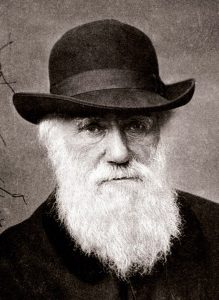
Charles Robert Darwin, 12 February 1809 – 19 April 1882) was an English naturalist, geologist and biologist, best known for his contributions to the science of evolution.
Evolution, as we learned from English geologist, biologist and naturalist Charles Darwin, operates on a dual mechanism of mutation and natural selection. Mutations are a random phenomenon that occurs spontaneously in any organism, and most have no significance for the organism. But sometimes, the mutation gives the organism some survival advantage that will pass on to its offspring that, in turn, will hand the mutation down and it will be set in the genome. This is natural selection.
Prof. Ayelet Fishman, head of the Laboratory of Molecular and Applied Biocatalysis, is developing methods for creating desirable chemical reactions using enzymes – natural molecules that evolved over billions of years of evolution. The enzymes work well in the natural environment, so they have an advantage over artificial chemical catalysts that require special conditions such as high temperatures and high pressure. Prof. Frances Hamilton Arnold, who recently visited the Technion, is the Linus Pauling Professor of Chemical Engineering, Bioengineering and Biochemistry at the California Institute of Technology and was awarded the 2018 Nobel Prize in Chemistry for this field of directed evolution.
“In fact, we are mimicking, or continuing, the evolutionary process,” explains Prof. Fishman, “but doing so in a way that optimizes the production of the desired products – food, detergents and the like – by encouraging random mutations and their choice-controlled unnatural selection.”
Using molecular techniques, the lab researchers are speeding up the development of mutations, creating a library of hundreds of thousands of mutants and choosing the enhanced mutants – those that are improved from the point of view of the function we are looking for, such as decomposition of fats by detergents. “Again and again, we repeat this process of encouraging mutations, creating libraries and controlled selection until we get the enzyme suitable for the required job.”
The current article presents innovative technology for the production of biodiesel – fuel produced from discarded oil – that is, leftovers from falafel stands, factories and the like. The importance of biodiesel is that it replaces ore-based fuels (such as gasoline), whose sources are being depleted and their mining is seriously damaging the environment.
Biodiesel is today produced by compressing methanol and oil through chemical catalysts, which require special and expensive production conditions. Here, however, researchers suggest making biodiesel using a natural enzyme called lipase. This enzyme, which is produced in the pancreas, breaks down lipids in the blood and is vital for normal body functioning and for coping with medical conditions such as diseases of the pancreas, kidney failure and inflammation of the gallbladder.
The problem is that lipase is unstable in non-aqueous environments such as methanol, which is essential for biodiesel production. Therefore, the research group focused on improving the stability of the enzyme at high concentrations of methanol. This is through the same approach of directed evolution. “We encouraged the formation of lipase mutations and exposed them to methanol for half an hour. The ‘surviving molecules’ went on to the next stage, another round of mutations and controlled selection, until the production of an enzyme with methanol resistance that was 100 times higher than the original enzyme.”
Prof. Fishman stresses that this is not only directed evolution, but also involves engineering activities based on analyzing the enzyme structure of a particle accelerator, identifying the characteristics that give it ethanol resistance and improving the production process using an amino acid called cysteine.
To summarize, using directed evolution and further stabilization of the enzyme by chemical means, unprecedented resistance was achieved – the enhanced lipase is stable in a liquid containing 70% methanol. The researchers believe that this achievement paves the way for expanding the production of biodiesel and to promote its use.
The study was conducted with the support of the Russell Berrie Nanotechnology Institute (RBNI).
Prof. Ayelet Fishman is the Technion’s Dean. She holds a bachelor’s degree (with honors), a master’s degree and a doctorate from the Technion’s Faculty of Biotechnology and Food Engineering. In 2005, after completing a post-doctoral position at the University of Connecticut and an extended position at the Tami-IMI Institute of the Israel Chemical Research Center, she returned to the Faculty as a faculty member. She has since headed the Technion’s Laboratory of Molecular and Applied Biocatalysis.
Prof. Fishman has won numerous awards including the Henri Gutwirth Prize for the Promotion of Research (2011) and the Yanai Award for Excellence in Academic Education (2011). 2011.
She was recently appointed to the position of Dean of Students, in which she is responsible for the full range of assistance to students during their studies – with scholarships and loans, in dormitories and mentoring, in psychological counseling, aid to Israel Defense Forces reservists and enriching campus life with social and cultural activities.
Development of 3D Engineered Atrial and Ventricular Heart Tissue for Disease Modeling, Personalized Medicine, and Drug Development
Researchers at the Technion – Israel Institute of Technology, the Rambam Healthcare Campus (Rambam Medical Center), and colleagues at the McEwen Stem Cell Institute at the University Health Network in Toronto, Canada have succeeded in producing 3D engineered cardiac tissues from embedded chamber-specific heart cells (atrial and ventricular cells) derived from human stem cells.
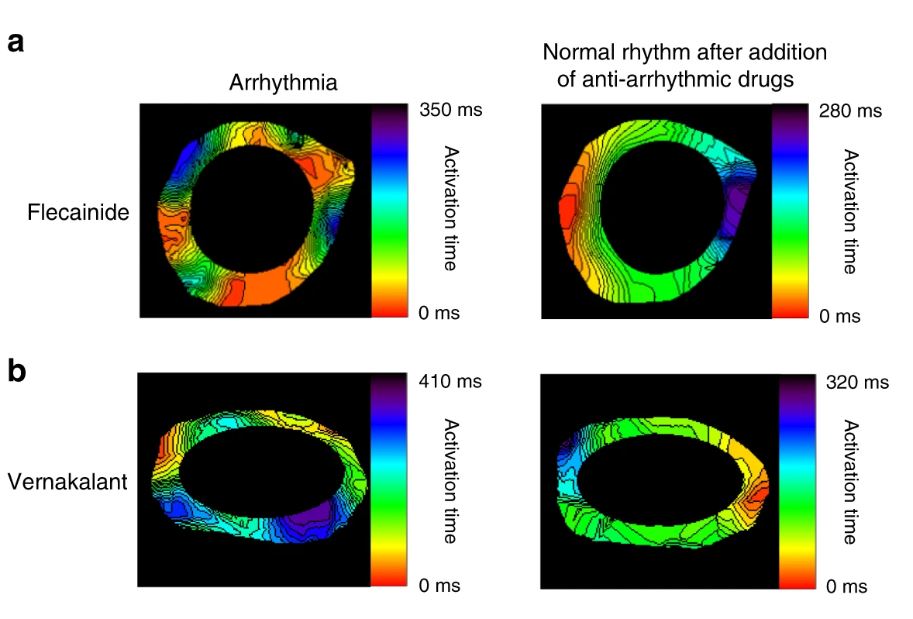
Creating a model of atrial fibrillation in the engineered atrial tissue, and mapping the electrical activity in this model in the left column, which shows a disorder resulting from “rotor formation,” and in the right column, the halting of the arrhythmia and return to normal rhythm through the use of existing and new drugs.
The tissues, which simulate heart tissues of the atrium (auricle, or the upper chamber of the heart through which blood enters the ventricles) or the ventricles, will serve in the near future for personalizing medications for cardiac patients and developing new drugs to treat them. In the more distant future, the technology is expected to be utilized in the production of implants for damaged areas in the auricles and ventricles.
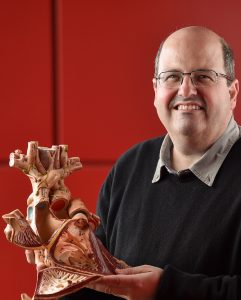
Professor Lior Gepstein
To demonstrate the inherent potential of this technology, the researchers developed a model of arrhythmia in the engineered atrial tissue. The model simulates the most common type of irregular heartbeat – atrial fibrillation – and allows the examination of the effect of relevant drugs in preventing or stopping the arrhythmia after it has begun.
The atrial and ventricular tissue models displayed unique properties in terms of gene and protein expression patterns, electrical activity, and contractile properties, which were similar to their corresponding chambers in the in vivo heart. “Separation between these two types of tissues is important because drugs that can improve the function of atrial cells and thus prevent arrhythmias in the auricle are liable to cause harm to ventricular cell function and even induce ventricular arrhythmias,” explained lead researcher Professor Lior Gepstein of the Technion – Israel Institute of Technology. “For example, for atrial fibrillation – the most common type of irregular heartbeat that is also responsible for more than a quarter of all strokes – we want to influence the electrical activity of the atrial cells using drugs, without affecting the function of the ventricular tissue. Now that we can individually manufacture the cells of the atrium and the ventricle, we can test each drug for each cell type separately.”
The unique research tools developed in the present study – engineered atrial and ventricular tissue, and innovative methods to study them – could revolutionize the field of drug development as well as the ability to personally tailor drugs to the patient from which the tissue was produced (personalized medicine). In the long run, Prof. Gepstein hopes, “we will be able to use similar methods to also produce heart tissue for transplants in cardiac patients. These tissues will be well received because they are based on the genetic characteristics of the patient him/herself.
The research, which was published in Nature Communications, was led by Prof. Gepstein, head of the Sohnis Family Research Laboratory for Cardiac Electrophysiology and Regenerative Medicine at the Technion’s Rappaport Faculty of Medicine and chief of cardiology at Rambam Health Care Center; together with doctoral candidate Idit Goldfracht. The work was conducted as part of a collaboration between the Technion and the laboratory of Professor Gordon Keller, who is the director of the McEwen Stem Cell Institute.
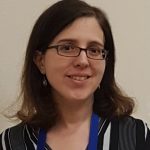
Doctoral candidate Idit Goldfracht
The present article complements a previous study from Prof. Gepstein’s lab that was recently published in the Journal of the American College of Cardiology. In that article, a unique, two-dimensional model of cardiac tissue was derived from a patient-specific human stem-cell source, allowing to model and study complex arrhythmias in inherited cardiac disorders. In this work, performed by Dr. Rami Shinnawi and Naim Shaheen of Prof. Gepstein’s research group, this unique model was used for the study of a life-threatening inherited arrhythmogenic syndrome called the short QT syndrome. This syndrome can lead to a variety of arrhythmias and even sudden death in young patients. The model presented by Prof. Gepstein’s team makes it possible to reconstruct and investigate the mechanisms underlying arrhythmias in this disease, test different treatments in the lab and choose in advance the optimal treatment for the specific patient. This work also demonstrated the possibility of using genetic editing (CRISPR) to correct the mutation leading to arrhythmia in this disease, providing proof-of-concept evidence for the potential of this approach for treating genetic disorders in the future.
BACKGROUND
The 2D and 3D models described in these two papers are based on the production of cardiac cells using human-induced, pluripotent stem-cell technology (hiPSCs). This technology was initially developed by Japanese researcher Shinya Yamanaka, the co-recipient of the Nobel Laureate in Physiology or Medicine for 2012.
One of the clear advantages of this technology is the ability to produce cells and tissues for transplantation from the patient’s own cells – which prevents the rejection problem when using cells from another person. In addition, the process also allows for the creation of patient-specific models in the lab that can be used to individualize patient-specific therapies and to derive unique platforms for drug development and drug testing.
The process, in a basic description, begins with collecting adult cells – skin or blood cells, for example – from the patient. These cells are then reprogrammed in a sort of “cellular time tunnel” and returned to the state of the earliest cells in the body, resembling embryonic stem cells. The resulting hiPSCs are then guided in the lab to differentiate into the desired cell types. In Prof. Gepstein’s and Prof. Keller’s labs, which focus on the cultivation of heart tissue, the researchers use different growth factors to direct the differentiation of stem cells into cardiac cells, and as illustrated in the last article, even into different types of heart cells – ventricular cells, atrial cells, and pacemaker cells.
For the full study in Nature Communications, press here

The process of creating the engineered atrial and ventricular tissues. The heart cells (ventricular or atrial) cells derived from the stem cells are mixed with collagen to form the engineered tissue within a designated template. The resulting tissue undergoes mechanical stretching, and finally, the resulting tissue alternately contracts and expands. In this case, the researchers developed a ring-shaped tissue.
Micromachines can target and introduce molecules into single cells
Research by Professor Gilad Yossifon of the Technion Faculty of Mechanical Engineering enables much more efficient and precise single-cell electroporation, targeted delivery and analysis
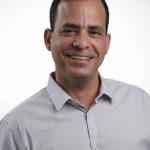
Professor Gilad Yossifon
Self-propelling micro-machines (“micro-swimmers”, “active particles”, “micro-motors”) are emerging as a promising microscale and nanoscale tool for single-cell analysis, drug delivery, environmental remediation, detoxification, self-repairing systems, self-motile devices and more. Motion is achieved by designing these particles to asymmetrically draw and dissipate energy, thus, creating local gradients of force for autonomous propulsion.
The current research has shown that by applying active particles as mobile microelectrodes, it is possible to control selective trapping, release and electroporation of single cells. This experimental tool for single-cell-based diagnosis of human disease and molecular biology can also serve as a new testing platform for cell therapies and targeted delivery.
The research, which was conducted by Professor Gilad Yossifon, of the Technion Faculty of Mechanical Engineering, with post-doctoral researchers Dr. Yue Wu (faculty of Mechanical engineering) and Dr. Afu Fu (faculty of Medicine), who are husband and wife, has just been published in Science Advances.
“We successfully demonstrated, for the first time, that an external electric field can singularly trap and transport bacteria and selectively electroporate the trapped bacteria,” explains Prof. Yossifon. This approach is generic and is applicable to bacteria and metallodielectric Janus particles (where one hemisphere is conducting and the other dielectric), as well as to a wide range of cell types and micromachine designs.
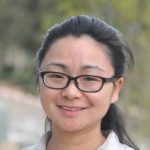
Dr. Yue Wu
Electroporation is a prevalent microbiology technique in which an electrical field is applied to cells in order to increase the permeability of the cell membrane, allowing chemicals, drugs or DNA to be introduced into the cell. It is frequently used for introducing DNA into bacteria cells, where the cells then “copy” the DNA. Currently, electroporation is commonly applied to a large number of cells at the same time, and it is not possible to carry out the process on a single targeted cell. The method developed by Prof. Yossifon, however, can navigate to a specific cell, breach the cell membrane, and introduce the molecules to that cell.
Biologists will be able to manipulate single cells using this new tool, which has many advantages over other studied approaches using cumbersome external micro-manipulators. The new platform is multi-functional and can introduce molecules either to single targeted cells, when combined with magnetic steering, or to many cells in parallel when many such micro-swimmers are allowed to move autonomously, increasing the electroporation yield and improving the results.
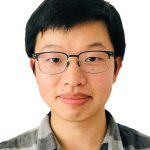
Dr. Afu Fu
This innovative “lab-on-a-particle” like platform uses self-propelling carriers to further advance diagnostic testing and sample analysis. It boasts the advantages of the traditional lab-on-a-chip, such as portability and efficiency, but is able to overcome such challenges as complexity and predetermined design. Similarly to nanochannel electroporation, the mobile microelectrode is able to perform local electroporation on a smaller portion of the cell, so that it is minimally invasive. As a result, it is expected to result in a significantly higher reversible electroporation yield.
The new method has been proven in vitro on bacteria. Prof. Yossifon is now expanding his research to include mammalian cells and various cargos.
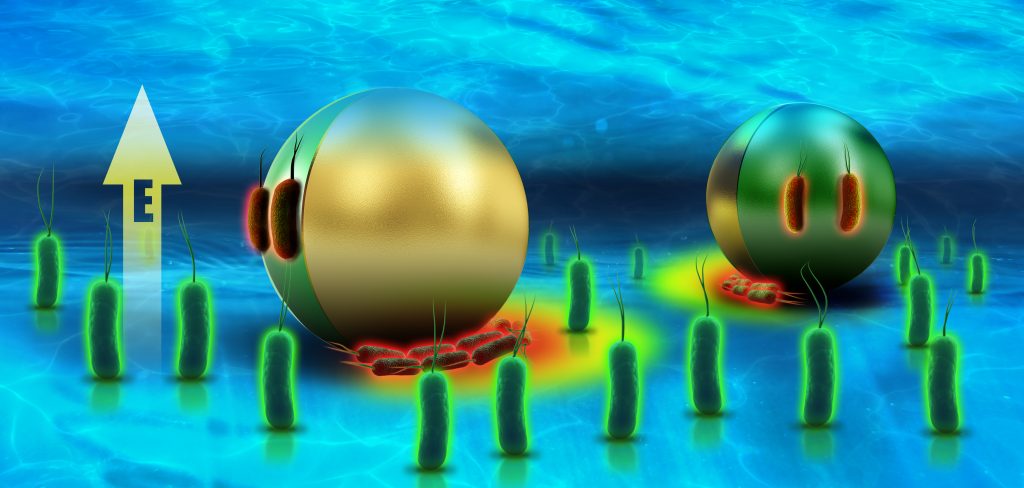
Figure caption: Schematic illustration of selective bacteria trapping, transport and electroporation (red fluorescence) using a Janus particle as a mobile microelectrode and an applied electric field are shown.
Technion Professor Yuval Shaked Presents a new outline of cancer therapies for patients
In an article in Nature Reviews, Prof. Shaked presents new ways to curb the development of resistance to treatment that impairs the effectiveness of existing cancer therapies

Curbing the development of resistance to treatment that impairs the effectiveness of existing cancer therapies
Research by Professor Yuval Shaked of the Technion – Israel Institute of Technology presents new ways to curb the development of anti-cancer therapy resistance, a phenomenon that is detrimental to the efficacy of existing cancer treatments. His research and research of others that followed this route was recently summarized in a published article in Nature Reviews Cancer.
The background of the present article is the great challenge posed by resistance to anti-cancer therapies. Although the initial cancer treatment phase is often successful, many patients are affected by the development of resistance, characterized by tumor relapse and/or spread.
The majority of studies have so far focused on investigating the basis of resistance as a result of tumor-related changes. In the last decade, Prof. Shaked and his team have demonstrated the patient’s “contribution” to this resilience. This direction has been a paradigm shift in understanding cancer recurrence and encouraged the scientific and medical community to further advance its understanding of how the body protects cancer from the treatment. The current understanding is that cancer therapy can induce local and systemic responses in the patient’s body, and these actually support the resurgence of cancer and its progression.
The article published in Nature Reviews Cancer discusses these processes and more importantly – presents an outline for therapy that will prevent the development of treatment resistance. The article suggests how this new information can be used in the clinic. Specifically, it proposes that identifying these new mechanisms of treatment resistance can help to advance the important global trend of personalized (precision) medicine.

Professor Yuval Shaked
Prof. Yuval Shaked is the head of the Technion Integrated Cancer Center and the chief scientific advisor of ONCOHOST – a company he founded that work on translating this specific research direction into clinical use that will eventually improve the current treatment of cancer patients.
Some of Prof. Shaked’s discoveries in recent years have been linked to one of the most complex cancer therapy challenges: to understand why cancer therapy only helps some patients. The American Society of Clinical Oncology has defined the ability to predict patient response to treatment as an area of research of the utmost priority.
Prof. Shaked’s research focuses on predicting, as early as possible, the patient’s response to anti-cancer therapy, and improving existing treatments. He said, “Current modern immunotherapy has revolutionized cancer care. However, despite considerable advances in cancer treatment, most patients do not respond to therapy at all or from a particular stage. Without the ability to predict the effectiveness of treatment, many suffer from disease recurrence or spread, which sometimes erupts with even greater violence. Over the years, many have investigated and are still investigating the effect of therapy on the tumor itself, but few have analyzed the effect of the therapy on the patient.” Prof. Shaked’s research shows that predicting the host response to therapy can significantly improve patient care.
The phenomenon of host-response to therapy has been studied in the past by Prof. Shaked mainly in the context of chemotherapy, which harms not only cancer cells but also healthy cells in the body. But in a series of recent articles, Prof. Shaked found that this reaction occurs in almost every existing anti-cancer therapy, including advanced therapies such as biological therapy. The host’s response to treatment involves the production of resources such as proteins and increased release of growth factors –processes that protect the tumor and allow it to flare up and metastasize.
“We are not saying that existing treatments are not good,” Prof. Shaked emphasizes. “They just aren’t suitable for everyone. As mentioned, each treatment triggers a host response, and when this response exceeds the therapy effect, we receive ineffective treatment. For the therapy to be effective at the specific host level, it is important to predict the same counter-response and try to block it. This is how we will gain much more effective therapy.”
The overall trend of the medical world today is personalized medicine – an approach that matches the optimal specific treatment to the actual patient. Personalized medicine exists today in practice, but it is still very limited in its capabilities.
“To improve personalized medicine, we need to understand the mechanisms of the disease in depth and plan the optimal patient care,” said Prof. Shaked. “In the context of cancer, personalized medicine not only allows us to tailor a drug for the tumor but also to combine dedicated medications – a cocktail that is not based on empirical experience, but rather, on understanding the biological processes in the body that the therapy causes.”
Prof. Shaked’s research has already demonstrated the effectiveness of anti-cancer therapies based on the right combination of drugs and may provide a good basis for personalized medicine in various therapies. “For immunotherapy, one of the most important effective approaches today in the field of cancer, only some 20-30% of patients today respond. Through blood testing, we can predict the outcome of patients treated with immunotherapy and continue such treatment only in patients in whom treatment is expected to be effective. Based on the present study, in the future, we may offer combined therapies to increase the effectiveness of treatment or allow patients who are currently unresponsive to immunotherapy drugs to respond to them. This is a huge revolution that we must advance not only in research but also in the commercialization of research into actual therapies. Only then can we contribute to saving lives.”
ONCOHOST is currently conducting clinical trials that measure the host’s response to patient care and that predict the effectiveness of the treatment. The company is also looking for ways to integrate different therapies to increase treatment effectiveness.
“We have already reached clinical trials in Israel, and are in the advanced stages of negotiation to implement such a trial in additional countries in Europe and the United States, on the way to turning these said discoveries into the correct diagnostics and innovative medical care,” said Prof. Shaked. “The transition from basic laboratory knowledge to the patient’s bed must undergo many stages of feasibility, regulation, and therapy effectiveness. These actions are not conducted in the laboratory, but mainly by pharmaceutical companies, who are able to take scientific findings to clinical realization in patients. According to the clinical trials, we estimate that based on a simple blood test, we will be able to provide the patient with up-to-date information about the expected efficacy of the therapy being received and the options to modify it to improve outcomes.”
For the full article in Nature Reviews click here
Technion Conference on Wearables for Monitoring Health: A Glimpse into the Future of Preventive Medicine
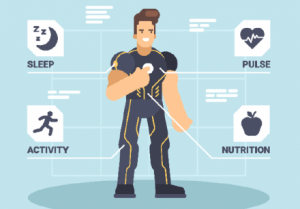
Technion Conference on Wearables for Monitoring Health
On Wednesday and Thursday this week (February 5-6, 2020), the Technion-Israel Institute of Technology in Haifa will hold its second conference on wearable devices for monitoring health. This series of conferences is being led by Prof. Hossam Haick, the Dean of Certification Studies, a faculty member of the Wolfson Department of Chemical Engineering Faculty and a member of the Russell Berrie Nanotechnology Institute of the Technion.
The current conference will focus on sensors and biosensors, wearables for monitoring, digital health and disease markers. Leading experts from Israel and abroad will lecture on a variety of cutting-edge technologies including smart sensing of physiological data, flexible electronics for wearable monitoring, oral breath sensors using smartphones, monitoring tuberculosis in the Third World, continuous monitoring of pain, a lab-on-the-skin, paper batteries and electronic skin that repairs itself.
The four main plenary lectures will be delivered by the following speakers:
* Prof. Howard Katz of Baltimore’s Johns Hopkins University, a specialist in chemical and biomolecular sensors and cancer diagnosis
* Prof. Sihong Wang of the University of Chicago, who develops polymeric materials and flexible devices that integrate with biological systems
* Prof. Joseph Wang of the University of California at San Diego, who combines flexible materials, biological sensors and microfluidic devices for monitoring physiological markers
* Prof. Shizuo Tokito of the Research Center for Organic Electrics at Yamagata University in Tokyo, who develops thin, printed transistors for physiological monitoring
Technion researchers who will lecture at the conference are Prof. Hussam Haick, Prof. Gilad Yossifon, Prof. Moran Bercovici, Dr. Shady Farah, Dr. Sinwook Park, Dr. Gidi Shani, Dr. Rotem Vishinkin, Dima Shlenkevitch, Natalie Berger and Muhammad Khatib.
The conference will be held at the Technion’s Grand Water Research Institute on Wednesday-Thursday, February 5-6. 2020. It will begin on Wednesday at 9:00 a.m. with the opening remarks of Prof. Hossam Haick.
To the conference website: https://cswd2020.net.technion.ac.il
Conference Program: https://cswd2020.net.technion.ac.il/preliminary-program
The mysteries of the mind, Israel’s greatest exit and Technion and the Crown – all in the latest edition of Technion LIVE – hot technology news from Israel!
Read more and subscribe!


